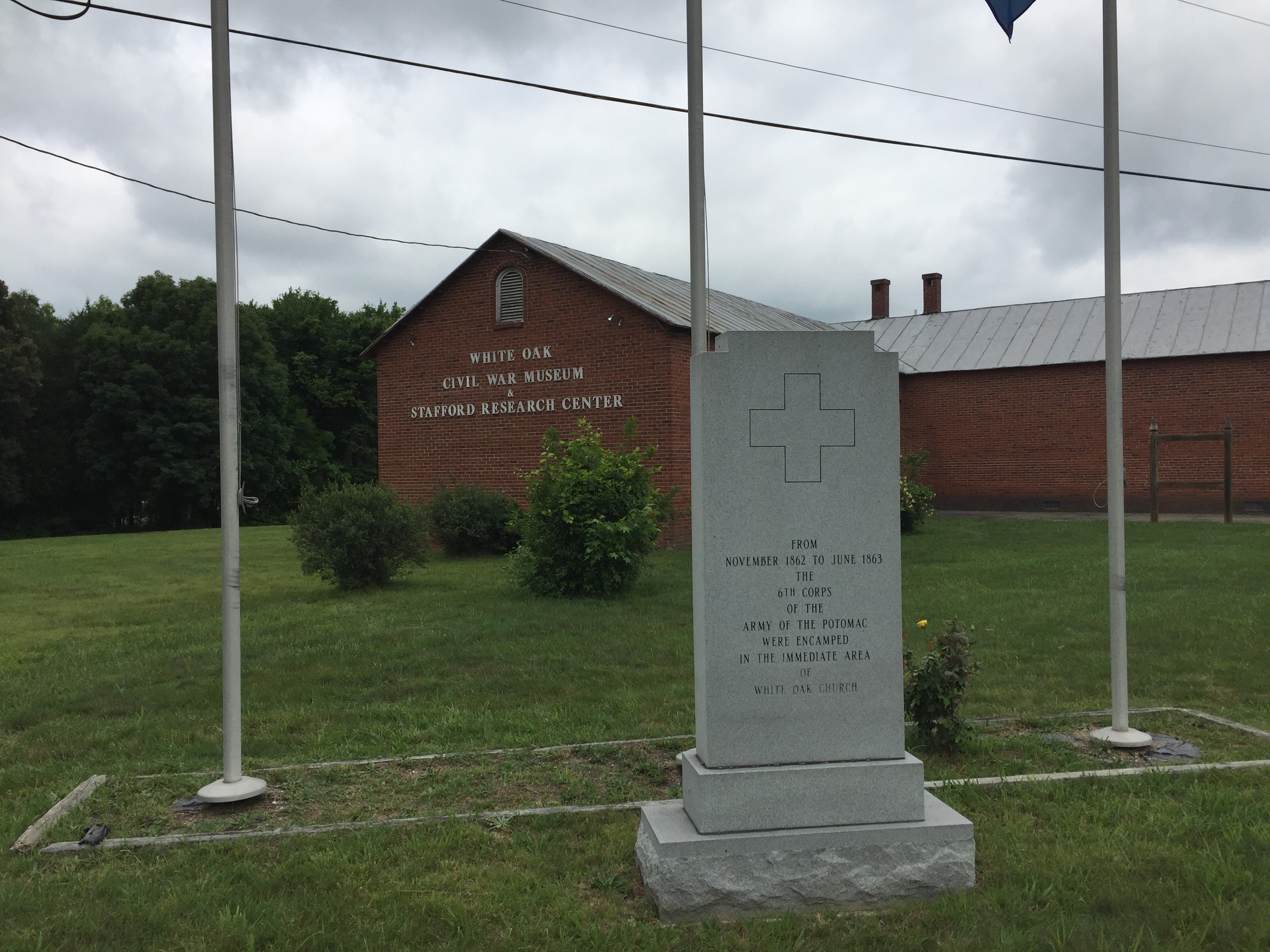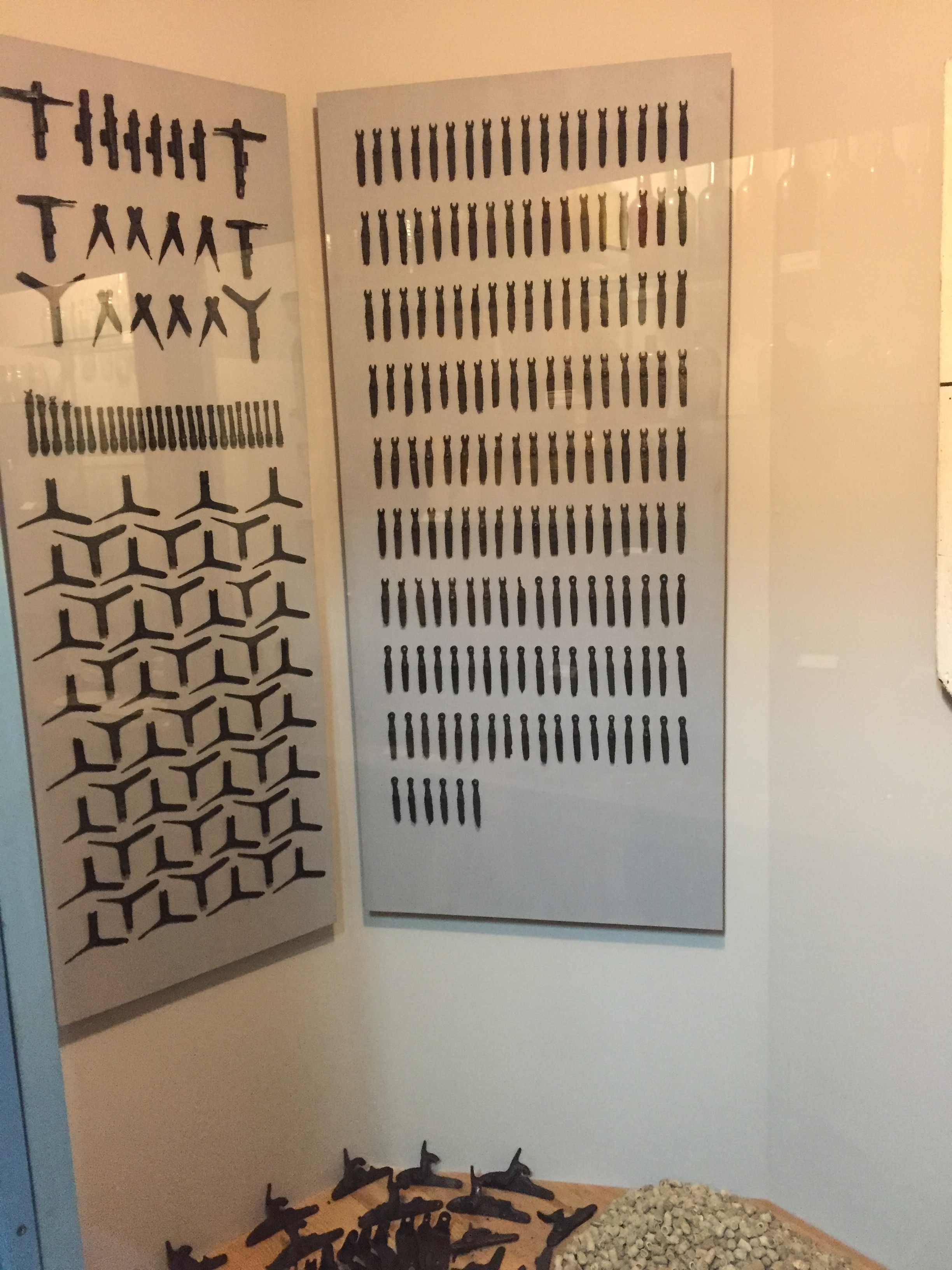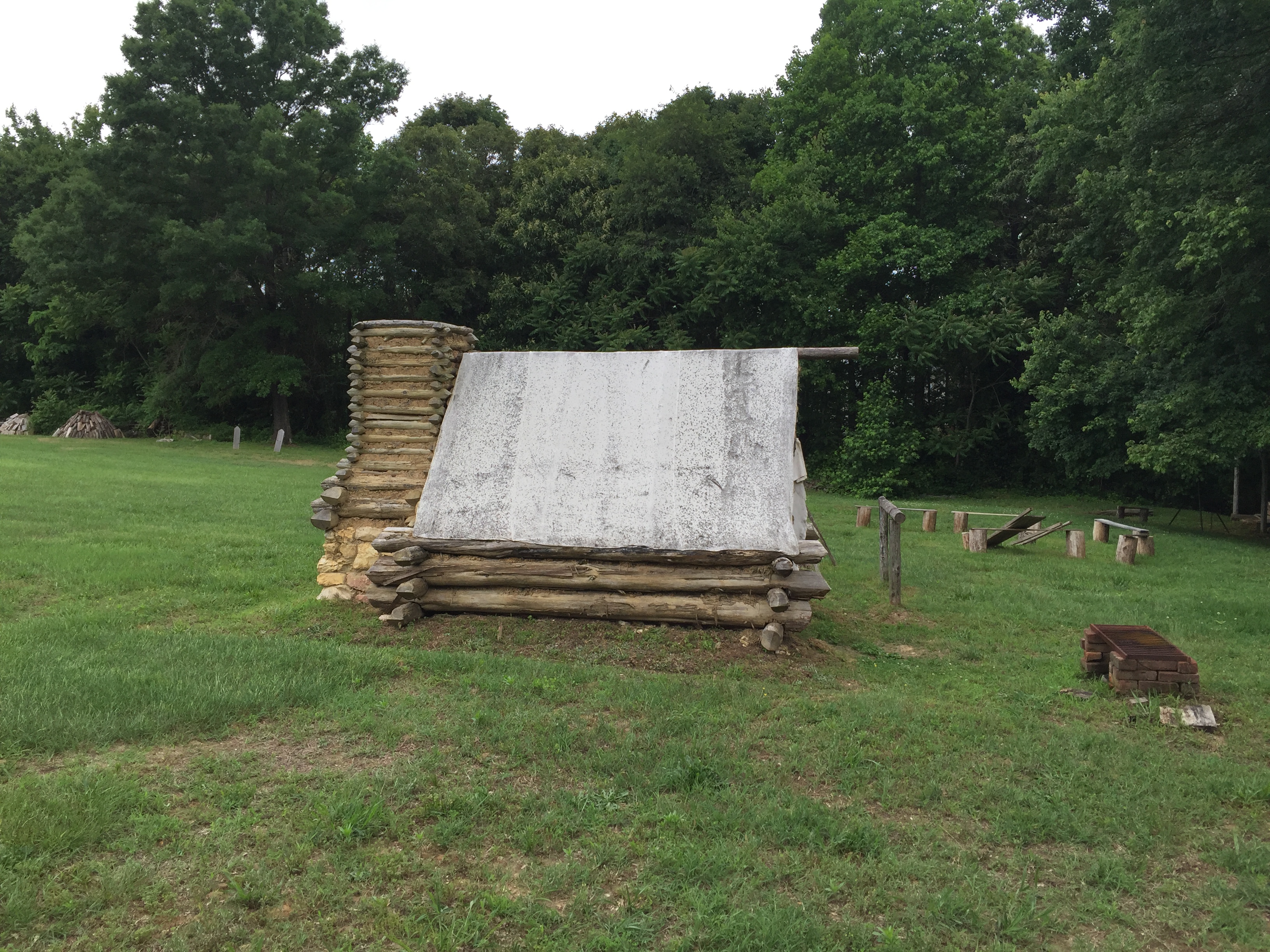ECW Weekender: The White Oak Civil War Museum and Stafford Research Center


Countless museums dot the Virginia countryside. Their sizes vary from the impressive National Museum of the Marine Corps in Triangle to the quaint Weems-Botts Museum in Dumfires. One museum, thoug,h has always stood out to me as being the perfect mix of quaint and impressive. The White Oak Civil War Museum and Stafford Research Center is one of those off-the-beaten path gems that Civil War geeks salivate over.
My wife and I were first pointed in the direction of the museum in 2005, when we were interns at Fredericksburg and Spotsylvania National Military Park. As we approached the museum we were not quite sure what to expect. A monument to the Federal 6th Corps’ winter encampment is perched in front of three flag poles, and an old school house. In the rear of the school we can see replicas of soldiers winter huts. The construction of the huts is impressive. They are clearly the right size and shape of the winter quarters we have read about numerous times, it was a real treat to see these domiciles meticulously brought back to life. But little did we know that the real treat waited inside.

Mr. D.P. Newton is the owner, curator, and Civil War guru of the facility. It was his passion, and that of his friends, that transformed an old school house into a treasure trove of Civil War relics, and research.
Sitting behind the cash register as we open the door is his mother. She is everything you would expect from a kind southern lady. She points us in the direction of her son, D.P., who is nose deep in a three ring binder. He was in the process of helping a friend identify a Federal camp site from the winter of 1862-63, where he had just turned up some relics.
After poking around for a few minutes we are able to speak with D.P. about a project that my wife was working on for the park. He listened intently, and his thoughtful eyes and his soft-spoken manner struck me immediately. He noticed my Pittsburgh Pirates hat and commented how I must not have been from around the area. I told him where I was from, and for a moment I thought that my northern roots may hold me back, that was until my wife chimed in that she was from North Carolina. That sectional crisis averted, he happily showed us around the museum and granted us access to seemingly countless binders of information that he, and his compatriots, had gathered on units that fought, camped, or passed through the area. He showed us his hand drawn maps (he is one hell of an amateur cartographer) of the camp sites he had combed throughout the county. At one point in time there were upwards of 140,000 Federal troops stationed in Stafford County, not to mention the thousands of animals that were needed to help support the army.

As he showed us around the museum, it became evident that he has an encyclopedic knowledge of what each case contains. Many times he knew the contents, where the relic was found, an approximate (if not exact date) of the discovery, and who discovered it. The display cases were filled with tens of thousands of artifacts. The artifacts though represent the daily life of a solder. He did not have high ranking officers coats, and swords, or letters from Robert E. Lee. What he had were the buttons, cooking equipment, and even the bones of the animals that fed the men. While the size of the collection is very impressive, the feeling that I got when I walked through there for the first time was a connection to the common soldier. He and his friends had spent countless hours combing the old campsites and meticulously noting their finds. The connection they had to their work gave me a stronger connection to the artifact collection, couple that with the fact that they wanted to show how the average soldier lived, made this visit much more impactful to me.
Inside there were more recreated huts. Thousands of bullets, buttons, breastplates, etc…He said if they could pull it from the ground, he had it on display.

In my four and a half years in Fredericksburg my wife and I went to D.P.’s, as most of us call it, countless times. He attended a number of my History at Sunset tours, and was always as kind and thoughtful as he was the first day we met him. Once he told us the story of how he is related to Wayne Newton, yes that Wayne Newton. He said how the local historical society made a documentary on folks from the area and he let them use a picture of them together as kids. According to D.P., Wayne doesn’t claim that half of the family. He also sent us on a drive down nearby Newton Road. That’s where many of his family live. Just by Looking at the names on the mailboxes you can see there is no shortage of Newton’s in the area.
I have always enjoyed visiting the site. Sometimes it was for research, other times it was to pick D.P.’s brain, or like last month to take a friend to experience it for the first time. I had not been back in some time, but it felt like that summer day in 2005 when I walked through the door. D.P. was nose deep in a three ring binder, with two folks he was helping looking over his shoulder, and hanging on his every word.
If you are traveling through the Fredericksburg area, or are coming down to next months symposium, I suggest making the trek to the White Oak Museum and Stafford Research Center. Be sure to call ahead if you want to meet D.P. He is an avid fisherman, and more than once I arrived at his door to see the “gone fishing” sign hanging up.

A nice piece of history
Great to see White Oak get the recognition they deserve. DP is a treasure around here.
As far as collections of Civil War “stuff,” the White Oak Museum has, hands down, one of the absolute best collections. Definitely worth a visit for people who are in the area.
During the 150th celebration, I worked on a project sending out my great great-grandfather’s letters on the 150th Annv. of authorship to relatives and friends. My brothers and I also tried to be where he was 150 years later. Following him during the winter of 1862-63 lead to D. P. whose facility and knowledge are a true treasure trove. The notebooks (there are many) are dedicated to each Union unit and contain everything D P has been able to glean over the years, copies of my ancestor’s letter’s are now in the 82nd PA section. During that winter, my ancestor was responsible for care of Gen. Shaler’s horses. D.P. was not only able to direct me to the camp site but also educated me on the “Shaler” bullet manufactured by the General’s father’s company, and the fact that only the General’s brigade was still ordering them. The exhibits are well done and very informative. Just talking to DP is well worth the trip. Thanks Kris for this article.
Jay Willis